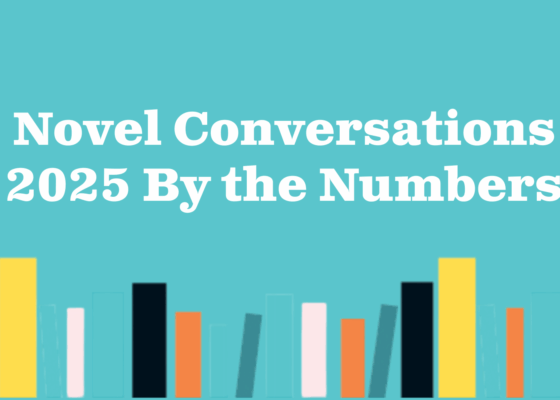Poetry in Our Time: Conversation with Susan Neville
April 24, 2020“On Poetry and Music” by Susan Neville It is difficult/to get the news from poems/yet men die miserably every day/for lack/of what is found there. William Carlos Williams, from…
“On Poetry and Music” by Susan Neville
It is difficult/to get the news from poems/yet men die miserably every day/for lack/of what is found there. William Carlos Williams, from “Asphodel, That Greeny Flower”
I didn’t really understand poetry until I was in my forties and then one day I felt as though I understood all of it. It was that sudden, like Paul on the road to Damascus or like waking up one day and discovering that in my dreams I’d learned to speak and read Mandarin. It had everything to do with deepening experience: of grief, of motherhood, of love, of limitations, those “intimations of immortality” as Wordsworth wrote, or for me, perhaps, mortality. We all wake to sleep (Roethke) and I have taken my awakening extraordinarily slow.
Before that? While I had wonderful English teachers as a child and was a crazed reader of novels, poetry wasn’t really part of my education, for whatever reason. I had to memorize a couple of poems in grade school, though I had no idea why, and I was simply unable to do it. I hardly ever forget a song lyric—show tunes and the American Songbook and folk tunes and camp songs and hymns and jingles are stuck in my head forever, but I couldn’t, and still can’t, memorize a ten-line poem. Since my road-to-Damascus moment, I now carry many lines with me and can hook enough of an entire poem from the ocean of memory if I want, enough to find the rest of the poem in an index or by googling : the sea of faith was once…do not go gentle….when you are old and gray and full of sleep…stop the clocks…and they since they/ were not the ones dead, turned to their affairs. A few words are enough. It didn’t occur to me until recently that I remember all those song lyrics because I somehow am wired to need the pitch and texture of musical notes to serve as mnemotic devices for something very much like poems.
Anyway. I don’t remember studying a single poem in a high school classroom—maybe a couple of poems by Robert Frost—and I think that’s because every poem I came across or was taught existed only on the page. I could write a paper about it, but not a single poem struck me as beautiful or wise. Not one. Not even, I don’t know, The Road Not Taken. Just say what you want to say, I’d think, like my students now say to me.
I knew enough to look down on poems that rhymed because they were never surprising, or rather, because I knew they weren’t cool. And I didn’t appreciate ones that didn’t rhyme because, well, why were they poems? I didn’t feel that way about abstract expressionist paintings, even though they weren’t representational, or about atonal music, even though you couldn’t sing along to it, or even with experimental novels. I think it’s because I had enough experience with the other art forms, but I had no sense of a poetic tradition that contemporary poetry was in conversation with and no sense that there was even such a thing as contemporary poetry. There weren’t poetry readings or poetry museums (though there were libraries, which should have served the same purpose but didn’t.) There was, however, an art museum, and my house was filled with books and music.
In late high school I decided poetry might fit my hippie girl personae. I wanted to be one of those ethereal girls who could hold a cigarette up to my mouth and whisper (without coughing) ‘fire’ to a boy with a match (metonymy?) I had truly horrible taste, though. In poetry, and in boys. I loved Rod McKuen. He was in the zeitgeist. “I look in the mirror, practicing my smile” was memorable to me. It wasn’t that I didn’t like to read. I was into The Brothers Karamazov and Tess of the d’Urbervilles and Jude the Obscure and anything by Camus or Nietzsche. The longer the novel, the more philosophically dark, the more Russian characters with unpronounceable patronymics that it contained, the better. I could read Thoreau and Emerson, but not Whitman. There was something about poetry that I couldn’t get. I could say the same thing about math.
But my senior year in high school Joan Baez put out an album of spoken poetry called Baptism: A Journey Through Our Time, and I found good poems on the album that I also liked. I listened to that album over and over and let the music open up the place in me that allowed the words to resonate. I didn’t try to understand them, and so eventually I did understand them. And if I didn’t understand them at first, that was fine. You don’t try to understand a symphony, and these words were similar. Rimbaud, Rilke, Lorca, Ferlinghetti, Yevteshenko. I had never heard poetry before this, never realized that it was music masquerading as language. “In Guernica,” Baez spoke, “they laid out the children in their white dresses, in their pitiful white starched dresses.” And I heard the anger in the spitting ‘t’s’ of ‘pitiful’ and ‘white’ and ‘starched’ and the three stresses in ‘pitiful’ and the sharp stresses of ‘white’ and ‘starched’ and the sadness in ‘pitiful white starched dresses.’ It was endless, what you could hear in that line, and I knew that was the only way it could be said. And I heard the sarcasm in ‘Do not cry madre. They’ve gone to heaven with the saints. And God will fill the bullet holes with candy.” I still remember those lines. And Rimbaud’s “While the red-stained mouths of machine guns ring” and young men “Poor fools!” dead, in summer, in the grass” while “There is a God, who smiles upon us through/The gleam of gold, the incense-laden air,/Who drowses in a cloud of murmured prayer.” For the first time, I heard all of it. There were war poems, of course, from all over the world, but poems of love, but mostly it was the way that vowels and consonants worked together like oboes and violins that knocked me out.
I listened to those poems so much that when I first started writing fiction seriously, I would now and then recognize the rhythm of Ferlinghetti’s translation of Jacques Prevert, or the repeated consonants of an ee cummings poem or the absolute joy of hearing what I didn’t know was called a spondee (black glass) appear in a sentence I was writing. The words appeared in response to the music I heard inside my head, a rush of sound that, like music and conversation, was both mathematical and wild.
I began to see that words on the page, in poetry, are like the notes on sheet music. They tell you how the thing should sound because poetry is music, or at least that was my initial way in. Poetry was meant to be said and heard like an instrument is meant to be played, and it gives you wisdom and solace that you can carry with you and pull out when you need it: when you need an axe “to crack the frozen sea inside” (Kafka) or when you want to praise the beauty of something, like the way the “blue-bleak embers” in a fire sometimes fall and, when they do, they “gash gold-vermillion” (Hopkins).
It was all about the music, the balance of freedom and restraint.
And economy. I finally got that too. It was all about metaphor, which points to or which covers—like paper machine on what once was a balloon—something ineffable, invisible. It’s a kind of language, and we all are born to understand it. “A poem should be equal to: not true.” Archibald Macleish wrote in his “Ars Poetica.” “For all the history of grief/An empty doorway and a maple leaf.” And for love? “The leaning grasses and two lights above the sea” he wrote. “It should not mean,” he ends the poem, “but be.”
It was poets, finally, that taught me to write prose. I go back to my favorite poets now, again and again. I started noticing those rhythms and sounds in the prose of my favorite prose writers, of Virginia Woolf and James Baldwin and Eudora Welty and Willa Cather. Once I started noticing the same musical devices in the sentence, I couldn’t read a good one without being aware of how the sounds served the meaning, of how punctuation worked like rests in music or line breaks in a poem, how they created meaning but also syncopation and beats. Even the placement of dialogue tags—Hemingway’s endless ‘saids’—serve the rhythm. And I began to think of the paragraph as a room or box, like a stanza, where you could control the rhythm of prose, create resonance with the last line like a piano note played with the pedal held down.
And I became much more aware of imagery and so conscious, finally, that all of art, as Cather wrote in Song of the Lark is an effort to “make a sheath, a mould, in which to imprison for a moment the shining, elusive element which is life itself—life hurrying past us and running away, too strong to stop, too sweet to lose.” The sculptor or artist catches the moment, the “flash of arrested motion” in a medium like marble or clay or paint. But you catch it in a cup, a breath, a photograph, in a song, or, perhaps particularly, in a poem. Like this:
Child on Top of a Greenhouse by Theodore Roethke
The wind billowing out the seat of my britches,
My feet crackling splinters of glass and dried putty,
The half-grown chrysanthemums staring up like accusers,
Up through the streaked glass, flashing with sunlight,
A few white clouds all rushing eastward,
A line of elms plunging and tossing like horses,
And everyone, everyone pointing up and shouting!
Susan Neville is the author of six works of creative nonfiction: Indiana Winter; Fabrication: Essays on Making Things and Making Meaning; Twilight in Arcadia; Iconography: A Writer’s Meditation; Light, and Sailing the Inland Sea. Her collections of short fiction include The Town of Whispering Dolls, winner of the Doctorow Prize for Innovative Fiction; In the House of Blue Lights, winner of the Richard Sullivan prize; and Invention of Flight, winner of the Flannery O’Connor Award for Short Fiction. Her stories have appeared in the Pushcart Prize anthology and in anthologies including Extreme Fiction (Longman) and The Story Behind the Story (Norton.) Her story “Here” won the 2015 McGinnis-Ritchie Award from the Southwest Review, and recent stories and essays have appeared or will appear in Ploughshares, Image, North American Review, The Collagist, The Missouri Review, Diagram, and other magazines. She teaches creative writing, a seminar in Willa Cather, and courses in Butler’s First Year Seminar program.


